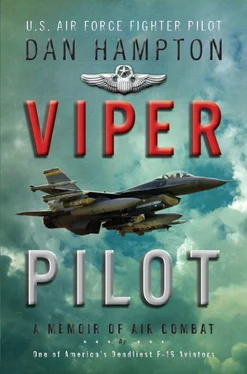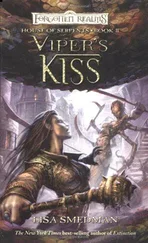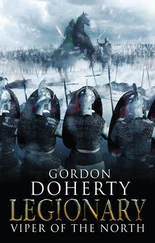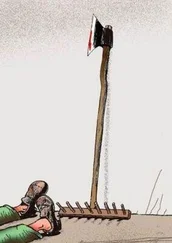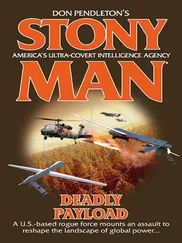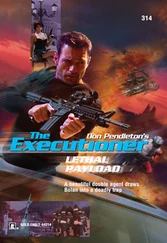Germany sounded like a nice place, so I listed the three bases there that had F-16s. The first two, Hahn Air Base and Ramstein Air Base, had no vacancies during my assignment cycle, so I ended up with my third choice. I’d never heard of Spangdahlem Air Base, home of the 52nd Tactical Fighter Wing, but it didn’t matter. It was in Germany.
With the Cold War still in full swing, Europe was the primary theater of operations. We had bases in the Far East, but I wasn’t interested in that part of the world.
Now, the operational (that is, non-training) Air Force was divided up into several large sections. There were the strategic aircraft—like bombers, transports, and air-refueling tankers. The bombers were there to fly deep into enemy (Soviet) airspace and drop nuclear bombs on Russian cities. Transports and tankers kept everyone supplied and full of fuel.
Then there were the tactical assets, like fighters, forward air controllers, and reconnaissance types. The fighters, in Europe at least, were basically speed bumps. We were to be thrown into the melee to slow down Russian tanks. You see, prevailing wisdom had decided that the big Soviet armored thrust, which would sweep across Europe to the English Channel, would come through the Fulda Gap on the West German border. This was a narrow pass in the Hartz Mountains and was assumed to be the focal point for the opening tank battle of World War III. Naturally, the U.S. Army and NATO were deployed around it, and the airspace above was nicely divided into chessboard sections called Restricted Operating Zones. Maps were drawn and color-coded, procedures exhaustingly created by officers with too much time on their hands, and, over the course of three decades, everything was neatly organized. There was, however, one problem.
It was nuts.
We were outnumbered ten to one by an enemy that had no problem turning Western Europe into a wasteland. They had nukes and would use them in a heartbeat if an all-out hot war broke out. This, of course, meant we would also have to use nukes. So Europe, with its beautiful cities, rivers, art, and good wine would become an immense, glowing parking lot for several generations. This war would make all previous conflicts look like Little League games.
Like I said, it was nuts.
To this day, I’m still not certain how we avoided all that. Mind you, I wasn’t too interested in geopolitical considerations at the time. Like most young warriors, I was a fairly simple tool. I had silver bars on my shoulders, wings on my chest, and a cool jet to fly. I didn’t care too much about who I was supposed to fight. And if you’re one of the guys doing the fighting, you have to believe you’re more vicious and lethal than the guy sitting in the opposing cockpit.
And we were the best.
The Royal Air Force, and maybe some NATO types, might take issue with this statement, but they used our equipment and had been through our training programs. We also had a generation of fighter pilots who’d seen combat in Southeast Asia within the past twenty years. The ones that survived and stayed in the Air Force were generally first-class aviators. They passed on tactics and techniques that had kept them alive in combat, as well as lots of other lessons you can’t learn from books. They also taught me how to think. Well, tactically, anyway.
When I arrived, the 52nd Wing was composed of the 480th, the 81st, and the 23rd Tactical Fighter Squadrons. It was a Wild Weasel flying wing, dedicated to hunting down and killing enemy air defenses, and I ended up flying in the 23rd Tactical Fighter Squadron—the famous Fighting Hawks. This was an unusual squadron, as it contained two types of aircraft. The venerable F-4G, left over from the Vietnam War, and the F-16C, which hadn’t seen any war with the U.S. Air Force. I discovered that one big reason I’d been able to get to the 52nd Wing was that very few F-16 pilots wanted to be here. The wing had mixed aircraft because the Air Force had decided to replace the aging F-4G but, of course, hadn’t given much thought to what would take its place.
We had a generation gap. Actually, two gaps. One between the pilots and one for the aircraft. Most of the pilots were great guys and had remained with the F-4 because, in the curious fashion of men and machines, they loved it. Others were within a few years of retiring and didn’t want to learn new technology or incur the extra years the Air Force would make them serve in return for the training.
So, I found myself in a new world. It was the real thing. We were less than ten minutes flying time from the Fulda Gap and the vodka-swilling Russian Horde; here, no one cared much about shiny boots or trivial rear-echelon bullshit. We’d been told that if the balloon ever went up, our average life expectancy was about ninety seconds—that does a lot to your outlook.
I also came face-to-face with another peculiar form of life, something called an EWO. This was short for Electronic Warfare Officer, and I’d never met one before. I was dumbfounded that the military could find a guy to ride along in the back of a fighter with absolutely no control over his destiny. I’d seen Top Gun, watched Goose die, and vaguely understood that certain planes, mostly Navy, had such people. But I’d never met one.
However, in 1988, the military still had aircraft like this. The USAF had its F-4G, F-15E, and F-111, while the Navy had the F-14 and EA-6. Egocentric F-16 pilot that I was, I’d never paid any attention to any of them. This, I later discovered, had been an intentional goal of the F-16 training program. The wave of the future was single-seat, multi-mission aircraft. That is, a jet that can do many things and only use one guy to do it with.
Of course, there’d been lots of single-seat combat jets before the F-16 came along. F-86s, F-104s, F-105s, etc., but the future, according to the Pentagon, was even more advanced technology. Technology that made cockpits and displays so good that one pilot could do what used to take a crew. This philosophy had been shoved into our craniums from the beginning.
Single seat, single engine, baby.
It’s a great motto.
In short, rely on yourself, because if you don’t do it then it won’t get done. This had been preached to us, fed to us, mixed in our drinks, and by now was habit. So I, and every other F-16 lieutenant, was unprepared for non-pilots inhabiting our flying world. To make it worse, many of the EWOs had washed out of pilot training or couldn’t get in to begin with. They’d gotten as close to the action as they could by becoming “backseaters.” The fact that they wore the same flight suits and patches, although with different wings, didn’t seem to make much of a difference. With the arrival of the F-16, they could see that their time was limited, and this definitely didn’t improve their attitude or our reception. Neither did the arrival of a flock of young, single-seat fighter pilots who were just starting their careers.
NOW, EACH TIME A PILOT COMES INTO A NEW BASE, HE GETS TRAINED. It doesn’t matter who he is or what rank he holds, there will be some sort of training program. It is, of course, tailored to the experience level of the pilot and his previous qualifications. My checkout, like that of all inexperienced new arrivals, was very involved. Despite the past two years of continuous training, I was still a Fucking New Guy (FNG). I wasn’t Mission Ready (MR) yet, since this was a qualification quite properly reserved for frontline combat units. A squadron in Germany would never trust the readiness of their pilots to instructors sitting back in the Arizona sunshine. Besides, different bases had unique areas of responsibility. Some were primarily air-to-ground attack units, others did nuclear strike or night attack. The 52nd was officially a Suppression of Enemy Air Defense (SEAD) wing. Wild Weasels.
Читать дальше
